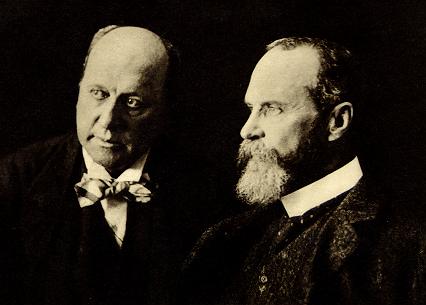"Is the Fed even trying to reflate?
This might seem like an odd question. Everyone seems to agree that Bernanke has done everything humanly possible to boost the economy. But there is a difference between doing a lot, and doing things that are effective. My hunch is that we will get a recovery soon, or perhaps I should say that is my reading of market expectations. But I see little reason to believe it will be adequate. Last month the Fed promised to buy up to a trillion dollars in bonds as a form of quantitative easing. The monetary base is higher than a month ago, but it is still lower than at the beginning of the year. The single most important thing the Fed can do right now (in addition to an interest penalty on excess reserves) is to clearly communicate its intentions to raise the five year expected inflation rate from 0.8% closer to its target of 2%. See if you think this passage from an April 14 speech by Bernanke effectively conveys the Fed’s determination to reflate:
“I mentioned earlier that the Fed’s mandate from the Congress is to foster price stability as well as maximum sustainable employment. The FOMC treats its obligation to ensure price stability extremely seriously. Price stability supports healthy economic growth, for example, by making it easier for households and businesses to plan for the future. In practice, price stability does not require that inflation be literally zero; indeed, although inflation can certainly be too high, it can also be too low. Experience suggests that inflation rates that are close to zero or even negative (corresponding to deflation, or falling prices) can at times be associated with poor economic performance. Cases in point include the United States in the 1930s and the more recent experience of Japan. In their latest quarterly projections of the economy, most members of the FOMC indicated that they would like to see an annual inflation rate of about 2 percent in the longer term. Right now, because of the weakness in economic conditions here and around the world, inflation has been running less than that, and our best forecast is that inflation will remain quite low for some time. Thus, the Fed’s proactive policy approach is not at all inconsistent with the goal of price stability in the medium term.
Although inflation seems set to be low for a while, the time will come when the economy has begun to strengthen, financial markets are healing, and the demand for goods and services, which is currently very weak, begins to increase again. At that point, the liquidity that the Fed has put into the system could begin to pose an inflationary threat unless the FOMC acts to remove some of that liquidity and raise the federal funds rate. We have a number of effective tools that will allow us to drain excess liquidity and begin to raise rates at the appropriate time; that said, unwinding or scaling down some of our special lending programs will almost certainly have to be part of our strategy for reducing policy stimulus once the recovery is under way.
We are thinking carefully about these issues; indeed, they have occupied a significant portion of recent FOMC meetings. I can assure you that monetary policy makers are fully committed to acting as needed to withdraw on a timely basis the extraordinary support now being provided to the economy, and we are confident in our ability to do so. To be sure, decisions about when and how quickly to proceed will require a careful balancing of the risk of withdrawing support before the recovery is firmly established versus the risk of allowing inflation to rise above its preferred level in the medium term. However, this delicate balancing of risks is a challenge that central banks face in the early stages of every economic recovery. I believe that we are well equipped to make those judgments appropriately. In addition, when the time comes, our ability to clearly communicate our policy goals and our assessment of the outlook will be crucial to minimizing public uncertainty about our policy decisions.”
I was OK with the first part of the first paragraph. I prefer a NGDP (or wage) target to inflation, but if he wants to define “price stability” as 2% inflation, so be it. He also recognizes the problems of undershooting the inflation target—it leads to “poor economic performance.” When he says they’d like to see an annual inflation rate of 2% in the “longer term” he loses me. Why longer term? Do they wish to see lower inflation in the short to medium term? At that point the speech becomes strangely passive. He suggests inflation will remain “quite low for some time” and then indicates in the very next sentence that that is consistent with the Fed’s goal of price stability. So now price stability doesn’t mean 2% inflation, it even includes less than 2%. This year’s forecast is for deflation. Maybe that’s price stability too. The beginning of the second paragraph is also very passive, as if the Fed is simply a spectator watching all this happen. I can’t help contrasting this with FDR’s expansionary monetary policy adopted in March 1933, which raised the WPI 14% in 4 months, and raised industrial production 57% in the same four months. FDR wasn’t passive.
In paragraph three he wakes up from his slumber. Now policy will act on a “timely basis” to prevent high inflation in the future, a problem the bond market doesn’t see. No more waiting around for “the time . . . when the economy begins to strengthen, financial markets are healing.” Now the Fed is promising to be proactive, to make it happen, to keep inflation from exceeding his target. I was dubious of Earl Thompson’s argument that central bankers had an asymmetrical reaction to inflation, but I have to admit that this supports his view.
In addition, Bernanke seems to be under the strange illusion that issuing interest-bearing reserves that are hoarded by banks represents some sort of inflationary time bomb. I don’t see it, the world’s leading expert on interest on reserves doesn’t see it, and the bond market doesn’t see it. On the other hand I see a risk of undershooting “for some time” as does the bond market and (apparently) as does the Fed. No effective policies on a “timely basis” to deal with that actual problem, but lots of policies already prepared for the imaginary problem of future high inflation.
Someone might object that I quoted selectively, that Bernanke was addressing the risk of high inflation. OK, look at the entire speech and tell me where he commits to boosting inflation, or to boosting NGDP growth."
"I think the NGDP rule does a bit better in a world of sticky wages, so employment should be more stable. The other argument is purely pragmatic. When we have ex post reason to think that policy may have been off track (too easy in 2004-06, too tight since last fall), the NGDP number gives much clearer warnings than inflation. Measured inflation wasn’t very high in either the tech or housing bubbles. I do think some people put too much blame on monetary policy for those bubbles, but it is reassuring to note that in retrospect, NGDP would have done a bit better"






































No comments:
Post a Comment